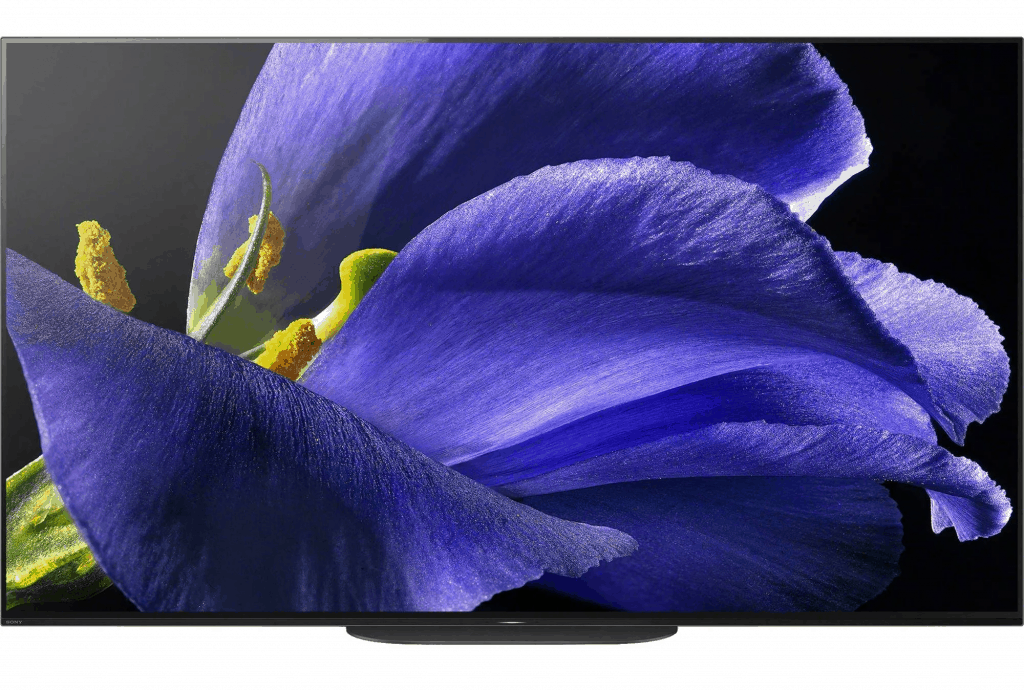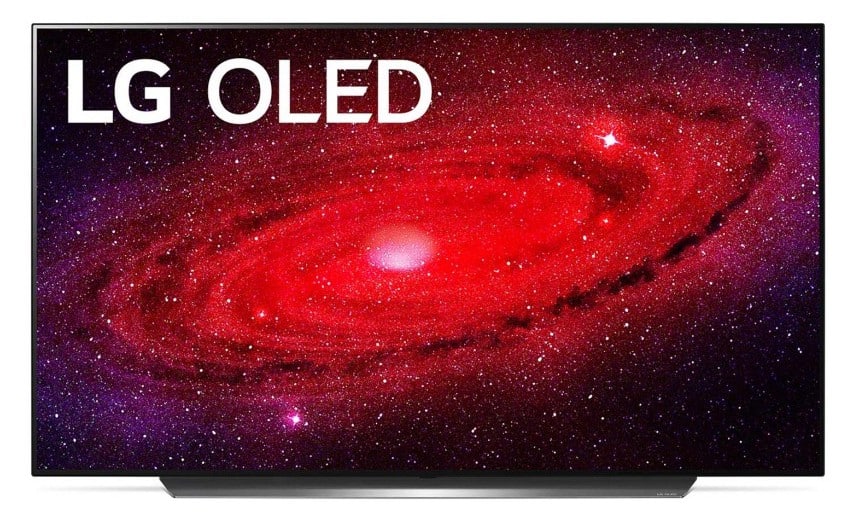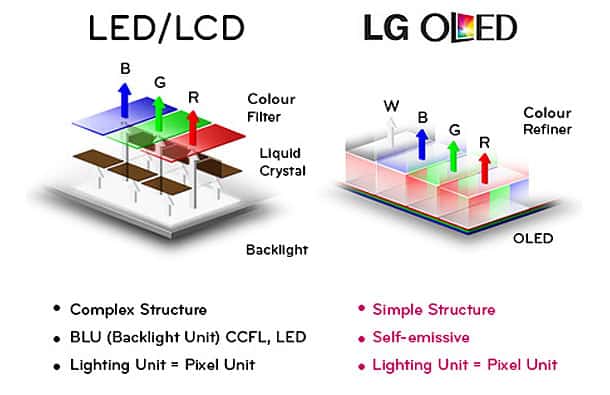It can be challenging to decide which TV is right for you when you look at TV specifications. Like others who want to buy a new TV, you want to understand what those labels and numbers mean. Above all, you want to choose a great TV. In this article, we will compare the Sony A9G vs LG CX, step by step!
Sony A9G vs LG CX – Quick Comparison
At first glance, these two models look almost identical. Both TVs have OLED panels of varying sizes, 4K resolution, and a 120 Hz refresh rate. In addition, both TVs have the same number of HDMI and USB ports.
However, some other factors may help you decide which TV to choose. But before reading the text, make sure to answer the following questions:
- Do you want to watch movies or play games on a new TV?
- How many people will watch the TV?
- Is your living room dark or bright?
- How many external devices do you want to connect to the TV?
The answers to these questions will help you to interpret the information in our article.
| Sony A9G | LG CX | |
|---|---|---|
| Screen sizes | 55, 65, 77 inches | 48, 55, 65, 77 inches |
| Screen Panel | OLED | OLED |
| Processor | X1 Ultimate | Alpha 9-3 |
| Operating system | Android 8.0 Oreo | WebOS 5.0 |
| Refresh rate | 120 Hz | 120 Hz |
| Variable refresh rate | No | Yes |
| Resolution | 4K | 4K |
| Contrast ratio | infinite :1 | infinite :1 |
| HDMI ports | 4 | 4 |
| USB ports | 3 | 3 |
Sony A9G

Pros:
- Great image processor
- Fast and intuitive OS
- Fantastic viewing angles
- Superb sound quality
Cons:
- Doesn’t have variable refresh rate
- Subpar remote
LG CX

Pros:
- It supports HDMI 2.1
- Has variable refresh rate
- More screen size options
- Supports 4K at 120 Hz
Cons:
- The bass on speakers sometimes crackle
- It has ports on the rear
Features Face to Face
Panel Technology
Both models use OLED technology. OLED stands for Organic Light-Emitting Diodes. It is worth mentioning that there is a significant difference between LED and OLED. OLED generates and emits light by itself. It does not require special white backlighting like LCD panels. So, this panel technology can produce the real black color since it does not have white backlighting.

However, many people are confused with the letter “O” in the name. The letter “O” just symbolizes the organic materials used in the production of the panel. OLED panels are made of carbon, hydrogen, oxygen, and nitrogen.
The only thing you need to know is that both the Sony A9G and LG CX TVs use OLED panels. So, they are equal in this segment.
Winner: Draw
Image Processor
The Sony A9G uses the X1 Ultimate processor. This processor tends to remaster all individual objects. In other words, it analyzes each object to improve texture and create images that are close to reality. It also eliminates color banding effects and image noises.
The LG CX, on the other hand, comes with the Alpha 9-3. This is the third generation of Alpha 9 processor, which brings a lot of improvements when it comes to picture optimization. Although these two processors are very comparable, the X1 Ultimate has a slight advantage in eliminating flicker.
Winner: Sony A9G
Motion Technology
If you want a TV that shows fast movements without blur, you need to pay attention to motion technology. We use the refresh frequency or refresh rate to describe the motion technology.
TV models on the market usually have 60 Hz or 120 Hz refresh rates. For instance, a TV display that has 120 Hz can show 120 pictures per one second. In this case, fast-moving objects don’t have shadows or any kind of artifacts.
Both models in our Sony A9G vs LG CX comparison have a 120 Hz refresh rate. However, the LG CX supports the variable refresh rate. This feature allows the TV to reduce stuttering and screen tearing. So, if you are a gamer, the LG model might be the best solution for you. You can also check out which PS4 console would be great for this TV.
Winner: LG CX
Picture Quality
The 4K label on the TV box is certainly a good thing. One thing is for sure the TV supports 4K resolution. But, you need to pay attention to other details, as well.
First, both TVs also support resolutions below 4K, such as 1080p, 1440p, or even 720p. Second, these resolutions interact with different refresh rates, and the results may vary.
Check out the table below for more information. As you can see, the LG CX model stands out since it can display the 4K format in combination with a 120 Hz refresh rate.
| Resolution | Sony A9G | LG CX |
|---|---|---|
| 4K/120Hz | No | Yes (native support) |
| 4K/60Hz/4:4:4 | Yes | Yes |
| 4K/60Hz | Yes | Yes |
| 1440p/120Hz | Yes (forced) | Yes (native support) |
| 1440p/60Hz | Yes (forced) | Yes (forced) |
| 1080p/120Hz | Yes (native support) | Yes (native support) |
| 1080p/60Hz/4:4:4 | Yes | Yes |
Contrast Ratio/Black Level
If you’re looking for a TV with an excellent contrast ratio, you should choose an OLED TV. In this case, both TV models offer an infinite contrast ratio. This is due to OLED technology that allows the TV to turn off the pixels individually.
Besides the great contrast ratio, other benefits of this panel technology are perfect black uniformity and wide viewing angles.
Winner: Draw
Local Dimming
Again, thanks to OLED technology, these TVs don’t have backlighting. It means they can turn the pixels on and off individually. So, they don’t have local dimming features. But they show bright objects on darker screens very well, with no blooming and with perfect blacks.
Winner: Draw
Peak Brightness
When testing peak brightness, it is recommended to choose TV mode. As you may know, a TV allows a wide range of modes such as Cinema mode, Game mode and so on. In this case, we are going to use Standard Mode.
Both models on the Standard Mode have a maximum brightness of around 750 nits. However, the LG CX is slightly better when it comes to SDR content. The peak brightness is 321 nits, while the Sony A9G can reach 281 nits.
Winner: LG CX
Color
In general, OLED panel technology might be the right choice if you like vivid and realistic colors. With that in mind, both TVs offer a wide color gamut and decent color volume. However, the LG CX TV is slightly better when it comes to HDR content.
So, if you want to use your TV for streaming UHD videos, the LG model might be the best solution. However, you won’t make a mistake if you choose the Sony A9G since the differences are minimal.
Winner: LG CX
Viewing Angle
If you have a large living room buying a TV with wide viewing angles is recommended. If you change your position while watching TV, the picture quality may also change. For instance, you can experience color washout, brightness loss, or a rise in black levels.
Both models have wide viewing angles. In general, you can experience some small picture changes at viewing angles of sixty or more degrees. But that is barely visible.
However, in some aspects, such as brightness loss or color washout, the Sony A9G shows better results.
Winner: Sony A9G
Reflections/Anti-glare
Both TVs in this Sony A9G vs LG CX comparison have a light sensor. In other words, they offer great reflection handling. If you want to place a new TV in a bright room, you can choose either of these two models!
Winner: Draw
Sound Quality
The LG CX has fantastic sound quality, even if you only use the Dolby Atmos. But if you switch on the AI Sound Pro, you will upgrade the sound experience.
The only downside is that the bass can sometimes crackle. That happens on rare occasions and with certain content. However, if you are a fan of clear and deep sound, maybe you should consider investing in a soundbar.
The Sony A9G Acoustic Surface Audio+ speakers do a great job, as well. They come with 60 Watts, whereas the LG model offers 40 Watts.
Winner: Sony A9G
Smart TV Platform (Operating System)
The Sony A9G features the Android 8.0 Oreo operating system. The system is fast and the interface is responsive. If you choose the Sony A9G, you will get a lot of pre-installed apps such as Netflix, Hulu, Amazon videos, and many more.
You can find almost the same apps on WebOS 5.0, which is a part of the LG CX model. Compared to Android 8.0 Oreo, this system is easier to use but not as smooth as the Android system.
| OS Features | Sony A9G | LG CX |
|---|---|---|
| OS Version | Android 8.0 Oreo | WebOS 5.0 |
| Ease of Use | Average | Easy |
| Smoothness | Very Smooth | Average |
| Time to Change Backlight | 2 s | 7 s |
| Time to Load YouTube | 2 s | 2 s |
Winner: Draw
Connectivity
Inputs
The LG CX has four HDMI inputs (one on the rear and three on the side) and three USB 2.0 ports (two on the rear and one on the side). It has one HDMI 2.1 input, and the rest are HDMI 2.0.
The Sony A9G has four HDMI 2.0 inputs. One is on the side and three are at the bottom. It also has three USB ports – two on the side and one at the bottom.
Both have an ethernet input, a digital audio output, and a headphone output.
Winner: LG CX
Voice Assistants
The A9G model comes with Sony’s new remote control with a built-in microphone and voice search via Google Assistant. But if you want to use this feature, you have to use Bluetooth to pair the remote with the TV.
The LG CX comes with the Magic Remote with voice control. The voice control allows you to search for content or change inputs. This remote comes with a pointer which makes it easier to use.
Both remotes have built-in Google Assistant and work with Alexa, Apple HomeKit, and Nest.
Winner: LG CX
Wireless technologies
Both TVs support WiFi 2.4 GHz and 5 GHz. So, you can use your Wi-fi router to connect the TV to the Internet. Another exciting option is to use your mobile phone to connect your Smart TV to a mobile hotspot.
The Sony A9G supports Bluetooth 4.2. The LG CX supports Bluetooth 5.0. Since the LG model supports the newer version of Bluetooth, it is the winner in this segment.
Winner: LG CX
Conclusion
To conclude this Sony A9G vs LG CX comparison, we summarized all our results.
Choose the Sony A9G if you:
- Want to watch TV with a lot of people
- Appreciate the great sound quality
- Want a high-quality and optimized picture
- Want to have a smooth Smart TV interface
Choose the LG CX if you:
- Want the variable refresh rate feature
- Want to have an easy-to-use Smart OS
- Would like to purchase a small version of the TV
- Want to watch TV with family and friends